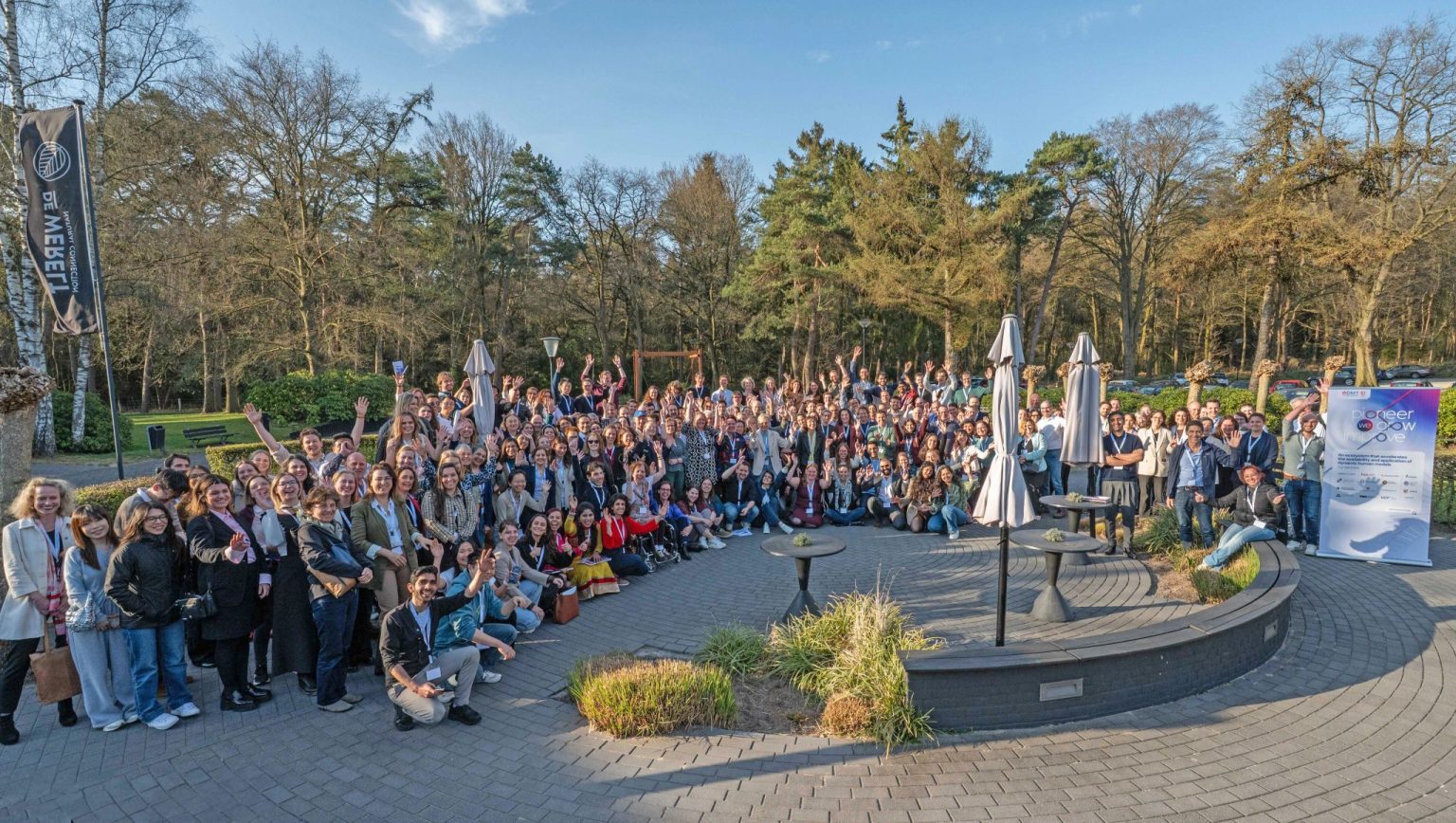On April 2-3, 2025, the hDMT 10-year Anniversary Conference brought together leading scientists and young researchers from hDMT partner organizations to celebrate a decade of innovation in dynamic human models. The event, held in Lunteren, was full of excellent science, with inspiring keynotes, engaging discussions and live demonstrations of prototypes, and was the breeding ground for new connections and collaborations that will drive future research.
hDMT in a nutshell
The conference started with a welcome by Christine Mummery, chair of hDMT, who described the very first initiatives on Organ-on-Chip research that led to the foundation of hDMT. Janny van den Eijnden-van Raaij continued with a presentation of the achievements of 10 years of hDMT, from pioneering to growth to improvement. Finally, the members of the hDMT management team, being Saskia Aan, Hanna Lammertse and Sabine Middendorp presented current and future activities focusing on Science, Infrastructure and Valorization.
A Strong Scientific Program
The conference featured insightful keynote lectures from renowned experts:
- Sue Gibbs (Amsterdam UMC) shared groundbreaking research on integrating blood and lymphatic vasculature into immune-competent models, highlighting advancements in tissue engineering.
- Andries van der Meer (University of Twente) presented the progress in standardization, emphasizing its importance for the transition of dynamic human models from research innovation to real-world applications.
- Boudewijn Lelieveldt (LUMC) provided valuable insights into biomedical image analysis, demonstrating the power of AI in interpreting complex biological data.
- Cristina Ganton (Erasmus MC) gave a presentation about the value of induced pluripotent stem cells for research on the role of sex differences in disease.
These talks, alongside many other outstanding oral and poster presentations, demonstrated the evolution of the field during the past decade—and where it is heading next.
Link to the scientific program.
A Celebration of Collaboration and Growth
Beyond the scientific program, there was a lot of fun and friendship, and the atmosphere was lively, interactive and collaborative. The highlight of the conference was the presentation of the hDMT 10-year Anniversary Book: We Pioneer, We Grow, We Improve, showcasing key milestones and achievements of hDMT during the past 10 years. The book was received with great enthusiasm and is not just a retrospective, but the visible outcome of the shared progress within hDMT and a source of inspiration for the future. Attendees received the first edition of the book. The digital version is now available online.
During the celebration, Albert van den Berg took a moment to share heartfelt words about Janny van den Eijnden-van Raaij, recognizing her pivotal role in shaping hDMT into the thriving network it is today. The evening ended on a high note, with a lively party..
Awarding Scientific Excellence
On the second day of the conference, outstanding young researchers were honored with awards for their exceptional contributions:
Best Oral Presentation: Beatrice Gabbin (LUMC) for her presentation entitled: Effective modification of a commercial 3D printer for bioprinting kidney organoids.
Best Poster Presentation: Danh Anh Minh Luu (University of Twente) for his poster entitled: Characterization and establishment of iPSC-derived enteric neurons and intestine macrophages to model neuro-intestinal immune axis on-a-chip
Their work represents the next generation of innovation in dynamic human models, and we look forward to seeing the impact of their research in the field.
A Heartfelt Thank You
We extend our deepest gratitude to all speakers, presenters, attendees, and all others who made this event a success. Your contribution, enthusiasm, and commitment to advancing dynamic human models are what make hDMT a vibrant, pioneering, growing and improving community. Here’s to the next decade of innovation, collaboration, and progress!

